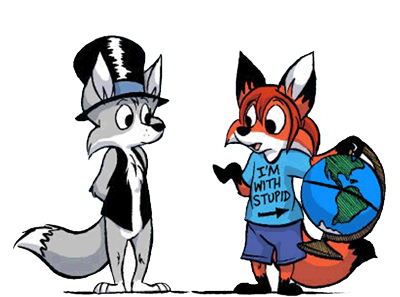Too bad. He was a Great Actor with a damn good run.Charlton Heston, the Oscar-winning actor who achieved stardom playing larger-than-life figures including Moses, Michelangelo and Andrew Jackson in historical epics and went on to become a best-selling author, a contentious Hollywood labor leader, an unapologetic gun advocate and darling of conservative causes, has died. He was 84.
Heston died Saturday at his Beverly Hills home, his family said in a statement. In 2002, he had been diagnosed with symptoms similar to those of Alzheimer's disease.
With a booming baritone voice, the tall, ruggedly handsome actor delivered his signature role as the prophet Moses in Cecil B. DeMille's 1956 Biblical extravaganza "The Ten Commandments," raising a rod over his head as God miraculously parts the Red Sea.
Heston won the Academy Award for best actor in another religious blockbuster in 1959's "Ben-Hur," racing four white horses at top speed in one of the cinema's legendary action sequences -- the 15-minute chariot race in which his character, a proud and noble Jew, competes against his childhood Roman friend, played by Stephen Boyd.
"I don't seem to fit really into the 20th century," Heston said in a 1965 interview. "Pretty soon, though, I've got to get a part where I wear pants with pleats and pockets."
Heston stunned the entertainment world in August 2002 when he made a poignant and moving videotaped address announcing his illness.
A few days after his dramatic announcement, Heston would sit down for an interview in his beloved Coldwater Canyon home, which he always said "Ben-Hur" had built, and faced the uncertain future with brave resolve and a sense of humor.
"The world is a tough place," he said with a chuckle. "You're never going to get out of it alive."
Late in life, Heston's stature as a political firebrand overshadowed his acting. He became demonized by gun control advocates and liberal Hollywood when he became president of the National Rifle Assn. in 1998.
Heston answered his critics in a now-famous pose that mimicked Moses' parting of the Red Sea. But instead of a rod, Heston raised a flintlock over his head and challenged his detractors to pry the rifle "from my cold, dead hands."
Like the chariot race and the bearded prophet Moses, Heston will be best remembered for several indelible cinematic moments: playing a deadly game of cat and mouse with Orson Welles in the oil fields in "Touch of Evil," his rant at the end of "Planet of the Apes" when he sees the destruction of the Statue of Liberty, his discovery that "Soylent Green is people!" in the sci-fi hit "Soylent Green" and the dead Spanish hero on his steed in "El Cid."
The New Yorker's film critic Pauline Kael, in her review of 1968's "Planet of the Apes," wrote: "All this wouldn't be so forceful or so funny if it weren't for the use of Charlton Heston in the [leading] role. With his perfect, lean-hipped, powerful body, Heston is a god-like hero; built for strength, he is an archetype of what makes Americans win. He represents American power -- and he has the profile of an eagle."
For decades, Heston was a towering figure in the world of movies, television and the stage. He liked to say that he had performed Shakespeare on film more than any other actor, and he once lamented that modern-day movie stars didn't attempt the Bard to hone their acting skills.
"He was the screen hero of the 1950s and 1960s, a proven stayer in epics, and a pleasing combination of piercing blue eyes and tanned beefcake," David Thomson wrote in his book "The New Biographical Dictionary of Film."
Heston also was blessed by working with legendary directors like DeMille in "The Greatest Show on Earth" and again in "The Ten Commandments," Welles in "Touch of Evil," Sam Peckinpah in "Major Dundee," William Wyler in "The Big Country" and "Ben-Hur," George Stevens in "The Greatest Story Ever Told," Franklin Schaffner in "The War Lord" and "Planet of the Apes" and Anthony Mann in "El Cid."
Charlton Heston Dead at 84
Moderator:Æron
-
Baconsticks
- Posts:2055
- Joined:Fri Jan 18, 2008 10:57 pm
- Location:Two Days To Last Thursday

- optiMITCHprime
- Posts:261
- Joined:Tue Jan 08, 2008 3:06 am
- Location:on the planet next to alpha centauri that nobody ever notices
- Contact:
- GeorgiaCoyote
- Posts:1107
- Joined:Thu Dec 20, 2007 1:20 pm
- Location:Down South, USA
- Contact:
- Tom Flapwell
- Posts:5465
- Joined:Wed Feb 23, 2005 1:48 pm
- Location:DC
- Contact:
Lessee, I've seen him in TTC, Ben-Hur, Planet of the Apes (both versions), Touch of Evil... oh, and Bowling for Columbine. Not bad overall. RIP.
See other much-maligned creatures in my webcomic: http://downscale.comicgenesis.com
-
Baconsticks
- Posts:2055
- Joined:Fri Jan 18, 2008 10:57 pm
- Location:Two Days To Last Thursday
- Bocaj Claw
- Posts:8523
- Joined:Mon Apr 25, 2005 11:31 am
- Location:Not Stetson University
- Contact:
-
Kevin_Brunstein
- Posts:7
- Joined:Wed Apr 23, 2008 8:39 pm
Who is online
Users browsing this forum: No registered users and 21 guests




